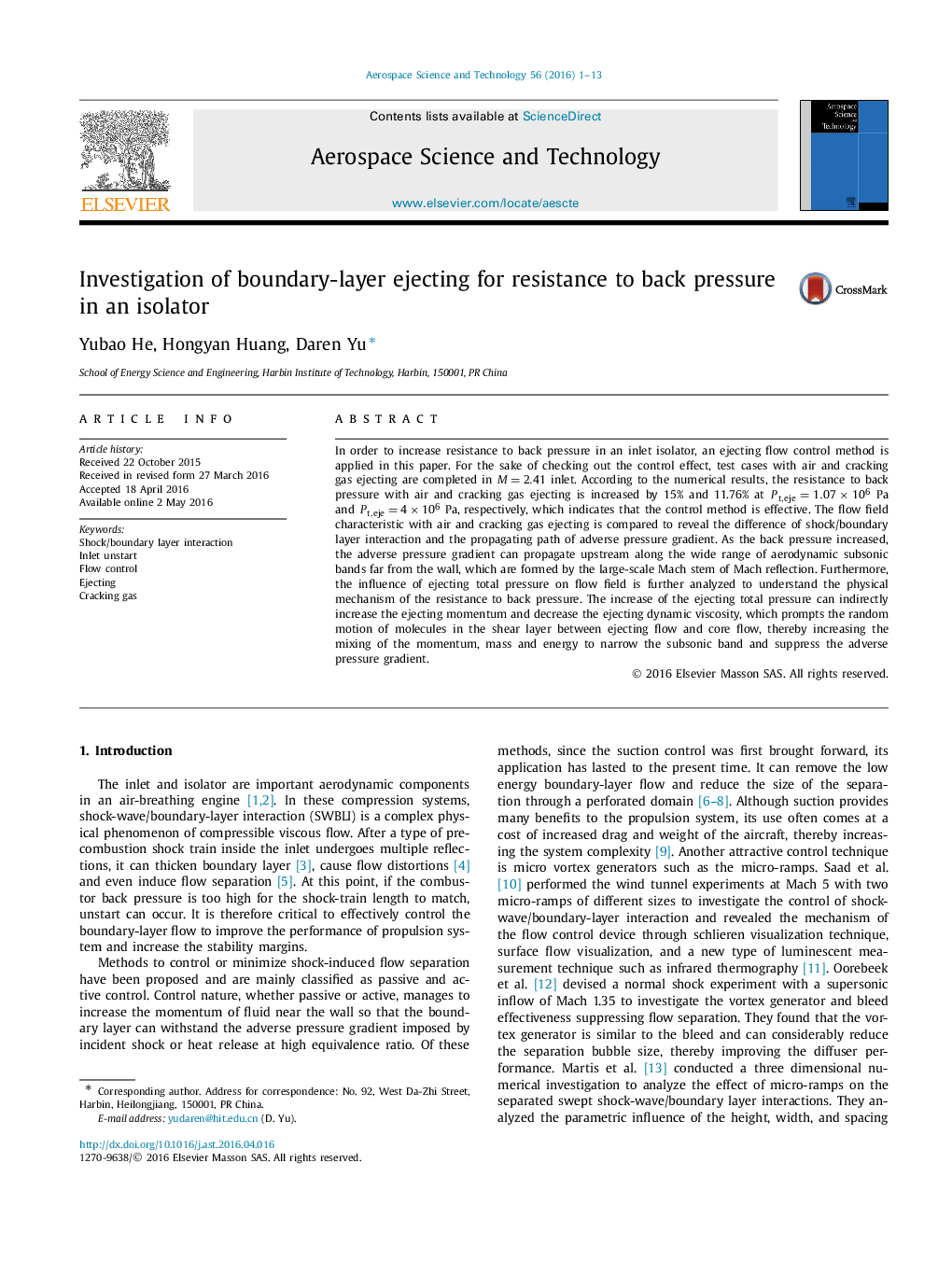| Article ID | Journal | Published Year | Pages | File Type |
|---|---|---|---|---|
| 1717583 | Aerospace Science and Technology | 2016 | 13 Pages |
Abstract
In order to increase resistance to back pressure in an inlet isolator, an ejecting flow control method is applied in this paper. For the sake of checking out the control effect, test cases with air and cracking gas ejecting are completed in M=2.41 inlet. According to the numerical results, the resistance to back pressure with air and cracking gas ejecting is increased by 15% and 11.76% at Pt,eje=1.07Ã106Pa and Pt,eje=4Ã106Pa, respectively, which indicates that the control method is effective. The flow field characteristic with air and cracking gas ejecting is compared to reveal the difference of shock/boundary layer interaction and the propagating path of adverse pressure gradient. As the back pressure increased, the adverse pressure gradient can propagate upstream along the wide range of aerodynamic subsonic bands far from the wall, which are formed by the large-scale Mach stem of Mach reflection. Furthermore, the influence of ejecting total pressure on flow field is further analyzed to understand the physical mechanism of the resistance to back pressure. The increase of the ejecting total pressure can indirectly increase the ejecting momentum and decrease the ejecting dynamic viscosity, which prompts the random motion of molecules in the shear layer between ejecting flow and core flow, thereby increasing the mixing of the momentum, mass and energy to narrow the subsonic band and suppress the adverse pressure gradient.
Keywords
Related Topics
Physical Sciences and Engineering
Engineering
Aerospace Engineering
Authors
Yubao He, Hongyan Huang, Daren Yu,
